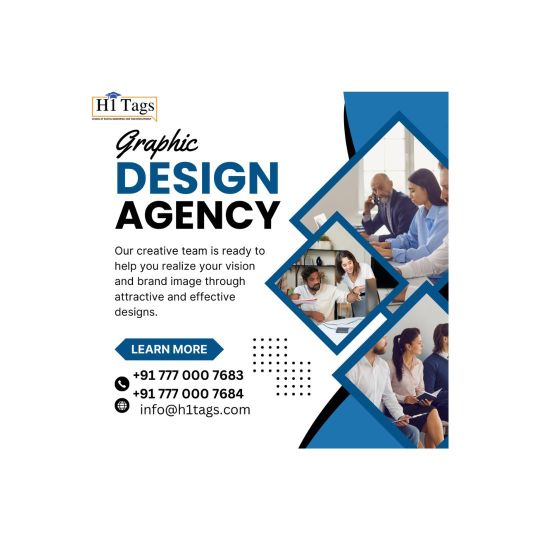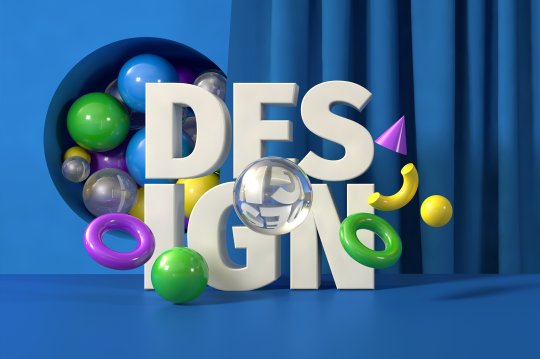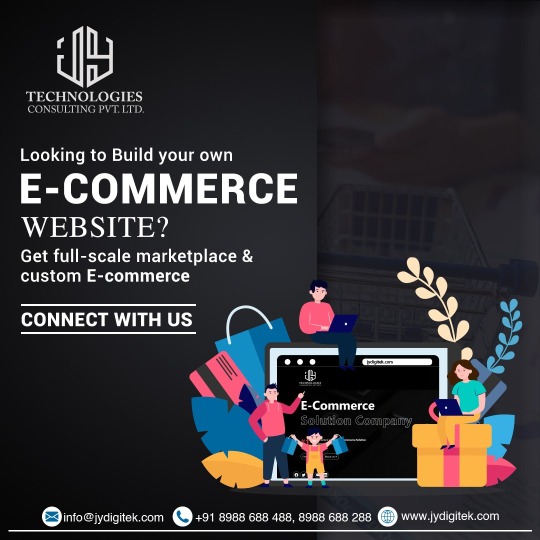Don't wanna be here? Send us removal request.
Text

Graphic design is a creative field that involves crafting visual content to communicate messages effectively. It combines art and technology to create designs for various media, including print, digital, and social platforms. Graphic designers use typography, imagery, color, and layout to produce visually appealing and functional designs, such as logos, advertisements, websites, and packaging. Their work aims to convey specific ideas, evoke emotions, and enhance user experience, playing a crucial role in branding, marketing, and digital communication.
0 notes
Text

Graphic design is a creative field that involves the use of visual elements to communicate messages, ideas, and information effectively. It encompasses a wide range of disciplines and techniques, combining art and technology to produce aesthetically pleasing and functional designs.
0 notes
Text

Graphic design is the art and practice of planning and projecting ideas and experiences with visual and textual content. It involves creating visual compositions to communicate messages through typography, imagery, color, and form. The field encompasses a wide range of activities, from designing logos and branding materials to creating web layouts, posters, product packaging, and more.
0 notes
Text
How to Choose the Right Graphic Design Software for Your Needs

Choosing the right graphic design software is crucial for ensuring efficiency, creativity, and compatibility with your specific needs. Here’s a step-by-step guide to help you navigate the selection process:
1. Define Your Design Requirements
Before choosing software, clarify what type of design work you primarily do or intend to do. Consider:
Graphic Design Disciplines: Are you focusing on print design, digital design, web design, UI/UX design, or a combination?
Specific Features: Identify must-have features like vector drawing tools, photo editing capabilities, typography support, animation tools, etc.
Collaboration Needs: Determine if you work solo or with a team, and whether collaborative features are essential.
2. Assess Your Skill Level
Consider your proficiency level with design software:
Beginner: Look for user-friendly interfaces and tutorials.
Intermediate: Seek software with more advanced features and customization options.
Advanced: Prioritize software that supports complex workflows and offers extensive customization and automation features.
3. Research Available Options
Explore different software options based on your defined needs:
Industry Standards: Adobe Creative Cloud (Illustrator, Photoshop, InDesign) for comprehensive design capabilities.
Specialized Tools: Sketch, Figma for UI/UX design; Affinity Designer as an Illustrator alternative; Procreate for digital illustration.
Online vs. Desktop: Consider whether you prefer cloud-based tools (Figma, Canva) or desktop applications (Adobe, Affinity).
4. Evaluate Features and Functionality
Compare software features against your requirements:
Core Features: Vector drawing, photo editing, typography tools, layer management, color management.
Additional Tools: Prototyping, 3D design, animation, collaboration features.
Integration: Compatibility with other software or plugins you use (e.g., Adobe plugins, third-party integrations).
5. Consider Workflow and Efficiency
Choose software that enhances your workflow:
Ease of Use: Intuitive interfaces, customizable workspaces, and shortcut options.
Speed and Performance: Smooth rendering, real-time editing, and responsiveness.
Automation: Tools that automate repetitive tasks can save time and improve productivity.
6. Trial and Feedback
Whenever possible, try out software through free trials or demos:
User Experience: Evaluate how comfortable and efficient you feel using the software.
Feedback: Gather input from peers or online reviews to understand real-world usability and support options.
7. Budget Considerations
Factor in costs:
Subscription vs. One-Time Purchase: Adobe Creative Cloud requires a subscription, while Affinity offers one-time purchase options.
Free vs. Paid: Consider free options like Canva or Inkscape versus paid software with more advanced features.
8. Support and Updates
Ensure the software provider offers adequate support and updates:
Customer Support: Availability, responsiveness, and quality of customer service.
Updates: Regular updates for bug fixes, new features, and compatibility improvements.
9. Scalability and Future Needs
Anticipate future growth and scalability:
Long-Term Use: Choose software that can grow with your skills and career aspirations.
Flexibility: Scalable features and capabilities to adapt to evolving design trends and technologies.
10. Legal and Licensing Considerations
Understand licensing terms and legal aspects:
Ownership: Clarify rights to your work and intellectual property.
Usage Restrictions: Ensure compliance with licensing terms for commercial or personal use.
0 notes
Text
Elevate Your Design Game: Expert Tips for Advanced Graphic Designers

As an advanced graphic designer, you already have a solid grasp of design fundamentals, tools, and techniques. To stay ahead in this ever-evolving field, it's essential to continuously refine your skills and adopt new strategies. Here are some expert tips to elevate your design game and keep your work fresh, innovative, and impactful.
1. Embrace the Power of Typography
Typography is more than just selecting a font; it's about creating visual harmony and enhancing readability. Experiment with different typefaces, sizes, and weights to create a dynamic hierarchy. Remember, the right typography can significantly impact the overall aesthetics and message of your design.
Tip: Stay updated with the latest typography trends and explore custom fonts to give your designs a unique edge.
2. Master the Use of Color
Color theory is fundamental in graphic design. As an advanced designer, push the boundaries by experimenting with unconventional color schemes and gradients. Understand the psychological impact of colors and use them to evoke the desired emotions in your audience.
Tip: Utilize tools like Adobe Color to explore and create harmonious color palettes that complement your design goals.
3. Leverage Advanced Tools and Plugins
Take advantage of the latest tools and plugins to streamline your workflow and enhance your designs. Advanced software like Adobe Creative Cloud, Sketch, Figma, and CorelDRAW offer a plethora of features that can help you create more intricate and polished designs.
Tip: Explore plugins and extensions that can automate repetitive tasks, allowing you to focus on creativity and innovation.
4. Focus on User Experience (UX) Design
Aesthetics are crucial, but usability should never be compromised. Integrate UX principles into your designs to create intuitive and user-friendly interfaces. Conduct user research and testing to ensure your designs meet the needs and expectations of your target audience.
Tip: Collaborate with UX designers to gain insights and improve the functionality of your designs.
5. Experiment with 3D and Motion Graphics
Adding a new dimension to your designs with 3D elements and motion graphics can make your work stand out. Software like Blender, Cinema 4D, and After Effects offer advanced capabilities to create stunning 3D models and animations.
Tip: Start with small projects to get comfortable with 3D and motion graphics, and gradually incorporate them into your design portfolio.
6. Keep Your Skills Sharp with Continuous Learning
The design industry is constantly evolving, and so should your skills. Participate in workshops, online courses, and design communities to stay updated with the latest trends and techniques. Websites like Skillshare, Udemy, and Coursera offer a wide range of courses for advanced designers.
Tip: Follow industry leaders and influencers on social media platforms to gain inspiration and insights into emerging trends.
7. Develop a Strong Portfolio
Your portfolio is a reflection of your skills and creativity. Regularly update it with your best work, and showcase a variety of projects that demonstrate your versatility. Include detailed descriptions and the design process to provide context to potential clients or employers.
Tip: Create a personal website or use platforms like Behance and Dribbble to showcase your portfolio and attract more opportunities.
8. Network and Collaborate
Building a strong network within the design community can open doors to new opportunities and collaborations. Attend design conferences, join online forums, and participate in design challenges to connect with fellow designers and industry professionals.
Tip: Collaborate with designers from different disciplines to gain new perspectives and enhance your creative process.
9. Seek Constructive Feedback
Constructive criticism is invaluable for growth. Seek feedback from peers, mentors, and clients to identify areas for improvement and refine your designs. Be open to different viewpoints and use feedback as a tool for continuous improvement.
Tip: Join design critique groups or forums where you can share your work and receive constructive feedback from a community of designers.
10. Stay Inspired and Creative
Creativity can sometimes be elusive, but staying inspired is key to producing great work. Draw inspiration from various sources such as nature, art, architecture, and culture. Take breaks, travel, and expose yourself to new experiences to keep your creative juices flowing.
Tip: Maintain a sketchbook or digital journal to jot down ideas and inspiration as they come to you.
By incorporating these expert tips into your practice, you can elevate your design game and continue to produce innovative, impactful, and visually stunning work. Remember, the journey of a graphic designer is a continuous learning process, so stay curious, experiment, and always strive for excellence.
0 notes
Text

Creating Buzz and Building Brands One Post at a Time
Unlock Your Digital Potential: Expert strategies in SEO, PPC, and social media management for businesses ready to dominate online
Driving Growth, Delivering Success: From tailored SEO campaigns to captivating content marketing, we're your partner in digital excellence.
Elevate Your Brand Online: Transforming ideas into impactful digital experiences through innovative SEO, web design, and e-commerce solutions.
Where Creativity Meets Strategy: Crafting compelling stories and driving results with our full suite of digital marketing services.
Your Digital Success Story Starts Here: Specializing in SEO, SEM, and beyond, we're dedicated to amplifying your online presence.
0 notes
Text
E-Commerce Insights: Stay Ahead of the Curve
E-Commerce Insights: Stay Ahead of the Curve
In the dynamic world of e-commerce, staying ahead of the curve is essential for success. To thrive in this competitive landscape, it’s crucial to leverage the latest trends, strategies, and technologies. Here are key insights to help you stay ahead in e-commerce:
1. Embrace Omnichannel Selling
Today’s consumers expect a seamless shopping experience across multiple channels – from desktop to mobile devices and social media platforms. Embrace omnichannel selling to reach customers wherever they are and provide a consistent brand experience.
Tips:
Integration: Integrate your online store with social media platforms and marketplaces.
Mobile Optimization: Ensure your website is mobile-responsive for easy browsing and purchasing.
Personalization: Use data to personalize the shopping experience across channels.
2. Leverage Artificial Intelligence (AI)
AI is transforming e-commerce by enabling personalized recommendations, predictive analytics, and chatbots for customer service. Embrace AI-powered tools to enhance efficiency, improve customer satisfaction, and optimize business operations.
Strategies:
Recommendation Engines: Use AI algorithms to suggest products based on customer preferences.
Chatbots: Implement AI-driven chatbots to provide 24/7 customer support and streamline inquiries.
Predictive Analytics: Use data to forecast trends and optimize inventory management.
3. Enhance User Experience (UX)
A seamless user experience is crucial for reducing bounce rates and increasing conversions. Invest in intuitive website design, fast loading times, and easy navigation to create a positive shopping experience for your customers.
Best Practices:
Responsive Design: Ensure your website is accessible and functional across all devices.
Clear Call-to-Actions (CTAs): Guide customers towards desired actions such as purchases or sign-ups.
User Testing: Conduct usability testing to identify and address any usability issues.
4. Prioritize Mobile Commerce
With the increasing use of smartphones for online shopping, optimizing for mobile commerce is non-negotiable. Ensure your website is mobile-friendly, with easy navigation, fast loading times, and secure payment options.
Mobile Optimization Tips:
Mobile-First Design: Design your website with a mobile-first approach.
Accelerated Mobile Pages (AMP): Implement AMP to improve page load speed on mobile devices.
One-Click Checkout: Simplify the checkout process for mobile users to reduce cart abandonment rates.
5. Focus on Personalization and Customer Loyalty
Personalized shopping experiences foster customer loyalty and increase repeat purchases. Use data analytics to segment your audience and deliver tailored recommendations, promotions, and content based on their preferences and behavior.
Strategies:
Segmentation: Divide your customer base into segments based on demographics, purchasing behavior, or interests.
Email Marketing: Send personalized emails with product recommendations and exclusive offers.
Loyalty Programs: Reward loyal customers with discounts, points, or exclusive perks.
6. Implement Sustainable Practices
Consumers are increasingly conscious of sustainability. Implement eco-friendly practices in your e-commerce operations, such as reducing packaging waste, offering green products, or supporting environmental causes.
Sustainability Initiatives:
Green Packaging: Use recyclable or biodegradable packaging materials.
Product Transparency: Provide information about the environmental impact of products.
Corporate Social Responsibility (CSR): Engage in initiatives that support environmental or social causes.
7. Stay Agile and Adapt
The e-commerce landscape evolves rapidly. Stay agile by monitoring industry trends, consumer behavior, and technological advancements. Continuously adapt your strategies and operations to meet changing market demands and stay ahead of competitors.
Adaptation Strategies:
Competitive Analysis: Regularly assess your competitors' strategies and market positioning.
Feedback Loop: Gather customer feedback to identify areas for improvement.
Experimentation: Test new ideas, features, or marketing campaigns to innovate and stay relevant.
Conclusion
Staying ahead of the curve in e-commerce requires a proactive approach to innovation, customer experience, and sustainability. By embracing omnichannel selling, leveraging AI, enhancing user experience, prioritizing mobile commerce, focusing on personalization and customer loyalty, implementing sustainable practices, and staying agile and adaptive, you can position your e-commerce business for long-term success in a competitive marketplace.
1 note
·
View note